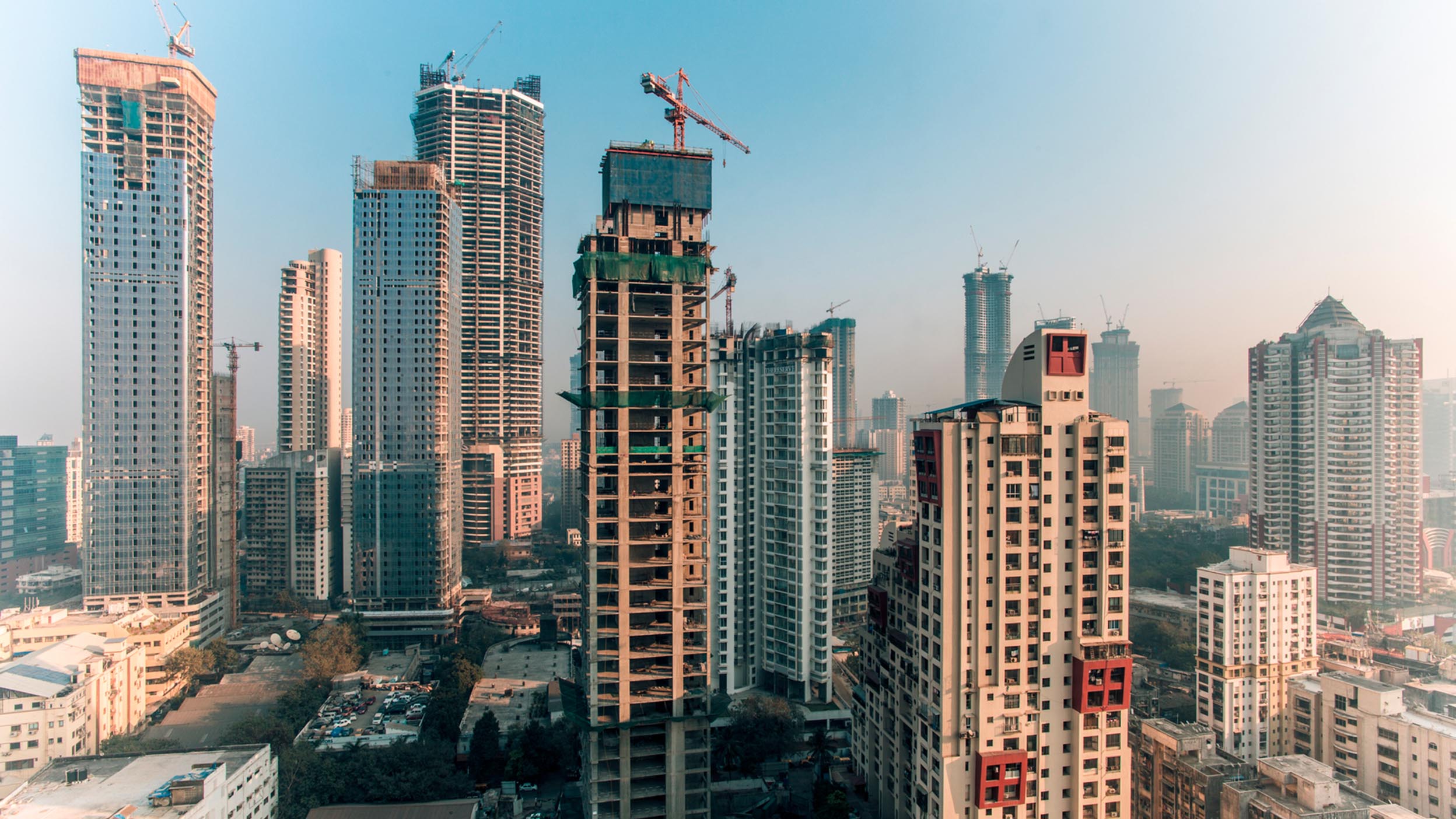
International and global equities Globalize your thinking
Explore trends that are driving global growth as we help you navigate the opportunities we see ahead.

We believe the pending merger of India’s largest private sector mortgage lender with its banking subsidiary offers intuitive synergies.
We anticipate the merger will result in higher growth, higher margins, and better capital efficiency.
India remains, in our minds, one of the most attractive growth markets for financial services, with one of the globe’s lowest mortgage penetration rates.
The Invesco Developing Markets team generally takes a dim view of mergers — particularly in the financial services industry — given complex integration challenges and potential balance sheet uncertainties. However, the pending merger of India’s largest private sector mortgage lender HDFC Limited with its subsidiary HDFC Bank1 is a rare exception. In our view, it is a nearly perfect and long overdue marriage with incredibly intuitive synergies.
Below are the top three potential benefits we anticipate from this merger:
HDFC Bank, which has emerged as India’s largest private sector bank2, has an unparalleled distribution network that will embellish HDFC Limited’s mortgage origination. HDFC Bank has pioneered unsecured consumer credit in India during its 25-year history, which coupled with consumer durable lending and small and mid-sized enterprise banking form the core of its credit book.
At present, just 8% of HDFC Bank’s 70 million-plus customers hold a mortgage, and only 2% of these customers hold an HDFC Limited mortgage.3 The runway for mortgage origination growth for the combined HDFC Bank Group is considerable.
We believe HDFC Limited’s core mortgage business will be able to increase profitability considerably post-merger as the mortgage business will be able to access the low-cost, granular retail deposits of HDFC Bank.
Currently, HDFC Limited cannot fund itself with bank deposits, and for over 40 years has had to rely upon more expensive wholesale funding. The cost of funding for HDFC Limited has averaged 7.8% for the mortgage lender over the last decade versus 5.3%4 for HDFC Bank. Despite this, HDFC Limited has consistently maintained Return on Average Assets in excess of 2.5%5 for the past decade. We expect returns on assets in the mortgage business to increase over time as its funding mix shifts.
We expect the merger to also increase capital efficiency across the group, further lifting HDFC Bank’s industry-leading Return on Average Equity of 19% versus the average of 12% for India’s private sector banks.6
With a Common Equity Tier 1 capital ratio7 in excess of 22%8, HDFC Limited has significant surplus capital that cannot easily be digested by the already considerable growth of its core mortgage business. We believe the merger will enable excess capital trapped in the holding company to fund over 20% medium-term credit growth of HDFC Bank.
Our longstanding relationship with HDFC Limited9 has been largely premised on the underlying attractiveness of the core mortgage business and, more recently, on the significant value shareholders have realized as the holding company has birthed some of India’s largest and most profitable private sector financial service subsidiaries. Most notable among those is HDFC Bank, but that also includes HDFC Life Insurance and HDFC Asset Management, among others.
India remains, in our minds, one of the most attractive growth markets for financial services. Mortgage penetration remains embryonic by most standards at 11% of gross domestic product10, one of the lowest globally. We believe mortgage and broader consumer finance credit growth can grow in excess of 15% compound for many, many years in India.
Although not the key premise of our investment case in HDFC Limited, we have actively pressed management and boards of both HDFC Limited and HDFC Bank of the compelling logic of this pending merger. And we see even greater upside potential to our investment in this almost perfect marriage.
Source: 0% held in HDFC Bank, Life Insurance and Asset Managment as of 11/30/2022
Source: Based on loan market share released by Reserve Bank of India, the Indian banking regulator, for financial year 2022
Source: Company reports as of June 2022
Source: Company annual reports for 2010-2022
Source: Company annual reports for 2010-2022
Sources: Company annual reports and RB for 2010-2022
Source: Company annual report for financial year 2022
Source: Tier 1 capital ratio is the ratio of a bank's core tier 1 capital—that is, its equity capital and disclosed reserves—to its total risk-weighted assets.
Source: As of 12/31/2022, HDFC Limited represented 6.81% of portfolio assets of Invesco Emerging Markets Class and 5.92% of portfolio assets of the Invesco Emerging Markets Fund.
Source: Reserve Bank of India for financial year 2022; Gross domestic product (GDP) is the total monetary or market value of all the finished goods and services produced within a country’s borders in a specific time period.
NA2714158
Important information
Header image: Adobe Stock
Holdings are subject to change and are not buy/sell recommendations.
In general, stock values fluctuate, sometimes widely, in response to activities specific to the company as well as general market, economic and political conditions.
The risks of investing in securities of foreign issuers, including emerging markets, can include fluctuations in foreign currencies, political and economic instability, and foreign taxation issues.
The performance of an investment concentrated in issuers of a certain region or country is expected to be closely tied to conditions within that region and to be more volatile than more geographically diversified investments.
Growth stocks tend to be more sensitive to changes in their earnings and can be more volatile.
The Fund may hold illiquid securities that it may be unable to sell at the preferred time or price and could lose its entire investment in such securities.
The investment techniques and risk analysis used by the portfolio managers may not produce the desired results.
The profitability of businesses in the financial services sector depends on the availability and cost of money and may fluctuate significantly in response to changes in government regulation, interest rates and general economic conditions. These businesses often operate with substantial financial leverage.
The Fund is subject to certain other risks. Please see the current prospectus for more information regarding the risks associated with an investment in the fund.
Tier 1 capital ratio is the ratio of a bank's core tier 1 capital—that is, its equity capital and disclosed reserves—to its total risk-weighted assets.
Gross domestic product (GDP) is the total monetary or market value of all the finished goods and services produced within a country’s borders in a specific time period.
This link takes you to a site not affiliated with Invesco. The site is for informational purposes only. Invesco does not guarantee nor take any responsibility for any of the content.